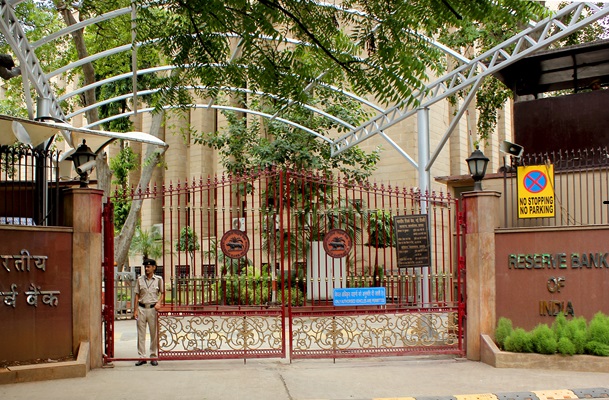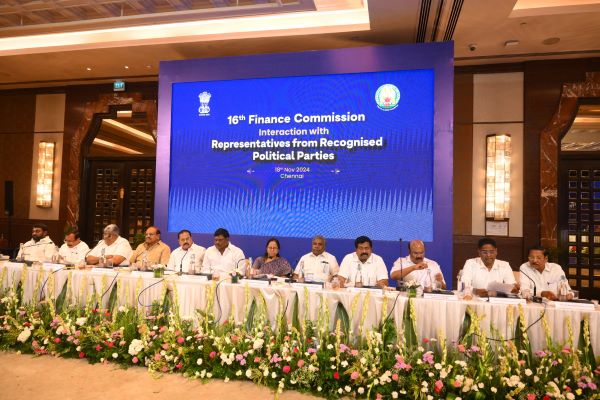.png)
Operation Sindoor Signals India’s New Zero-Tolerance Terror Doctrine
India sets a new counter-terror playbook with Operation Sindoor, warning Pakistan: no talks, no trade, and no peace without dismantling terror.

By Kalyan Ram
Kalyan Ram, a financial journalist, co-founded Cogencis and now leads BasisPoint Insight.
May 12, 2025 at 5:14 PM IST
India’s security response to terrorism has entered a new phase. In an address to the nation, Prime Minister Narendra Modi signalled a shift in approach: explicit, structured, and less restrained than previous postures. Operation Sindoor, the targeted military strikes carried out across the border, is now being framed not as an isolated reprisal but as a new potential benchmark in how India responds to acts of terror.
The government’s position is that terrorism will henceforth be met with direct and decisive action. In policy terms, this appears to represent a sharpening of India’s threshold for military response, particularly when acts of violence are perceived as attacks not just on lives, but on national integrity.
The doctrine, articulated by the Prime Minister’s speech, sets out that India’s retaliation will no longer be delayed by international opinion or shaped by conventional diplomatic protocol.
The Prime Minister’s speech also departed from past ambiguity surrounding India’s dealing with Pakistan. He made it clear that future talks with Islamabad would be limited to two areas: the dismantling of support to cross-border terrorism and discussions on Pakistan-Occupied Kashmir.
The conventional vocabulary of composite dialogue, backchannel engagement, and simultaneous progress on trade and security has been deliberately left out. Whether this signals a long-term strategic recalibration or a posture born of recent events remains to be seen, but the lines drawn are sharper than before.
India’s stated position now is that talks and terror cannot go together. Trade cannot be insulated from violence. Water and blood, in the Prime Minister’s words, cannot flow side by side. These formulations reflect not just anger at recent events, but a desire to close what many in the strategic community have long described as a gap between India’s rhetoric and its actions.
One of the most significant developments in this shift is the open rejection of nuclear deterrence as a limiting factor in counter-terror operations. For years, Pakistan’s possession of nuclear weapons has shaped the boundaries of India’s military engagement, particularly with regard to cross-border retaliation. Operation Sindoor tested those boundaries and moved past them. Whether this leads to a rebalancing of regional deterrence or invites new risks will be closely watched.
The government has also signalled that it will not draw distinctions between terrorist groups and the states that support them. The longstanding Indian view that Pakistani military agencies have provided material and logistical support to anti-India terror networks has now been brought to the centre of its policy framework. The public reference to funerals of terrorists attended by Pakistani military officers was meant to underscore this point—that sponsorship, not just tolerance, is at the core of the problem.
The Prime Minister struck a sombre note referring to the barbarity of the April 22 attack in Pahalgam. He described it as “a gruesome display of terror, where innocent civilians enjoying their holidays were brutally killed after being questioned about their faith, right in front of their families and children.”
The brutality of the attack and the imagery that emerged in its aftermath triggered a wave of anger across the country. What followed was not just a military operation, but a moment of political consolidation. The speech, delivered less than three weeks later, aimed to capture the national mood—grief, anger, and resolve—in a structured strategic response.
India’s response involved coordinated drone and missile strikes targeting terror infrastructure in key locations inside Pakistan. The action reportedly led to the elimination of over 100 militants, including some with long-standing records of violent activity. In operational terms, the strikes were presented as both punitive and preventative, aimed at weakening the capacity for future attacks and sending a broader message of deterrence.
Pakistan’s retaliatory moves, which included strikes on civilian and military sites, were countered by India’s air defence systems. India's drone and missile systems inflicted significant damage on Pakistani military installations, particularly airbases. The scale and accuracy of India’s operations, along with the reported damage inflicted, appear to have led Pakistan to seek a de-escalation through military-to-military communication channels.
India’s decision to pause operations, following a message from Pakistan’s Director General of Military Operations, has been described by the Prime Minister as a tactical suspension rather than a withdrawal. The framing suggests that India’s new approach is not driven by the desire for escalation, but by the demand for accountability. The government has made it clear that it will assess future actions by Pakistan before taking any further steps.
A prominent thread running through the speech was the emphasis on self-reliance in defence. The Prime Minister noted the effective deployment of Made-in-India systems during the operation. While this aligns with the broader Atmanirbhar Bharat campaign, it also reflects India’s ongoing efforts to reduce dependence on foreign platforms and develop indigenous capabilities for high-precision, high-response warfare.
The address also struck a philosophical note. Citing Buddha Purnima, the Prime Minister reflected on the principle that peace, to be meaningful, must be backed by strength. The idea that restraint must be chosen from a position of readiness—not from fear or hesitation—served as the moral underpinning of the new policy articulation.
The speech ended with a firm message to Pakistan’s political and military leadership. India’s position is that the infrastructure of terrorism must be dismantled in both letter and spirit. The determination that no engagement—diplomatic, commercial, or cultural—can move forward unless this condition is met was conveyed unambiguously. The references to Pakistan Occupied Jammu & Kashmir also indicate a shift in tone, if not yet in tactical posture.
Whether this address marks the beginning of a long-term strategic shift or stands as a moment-specific response will depend on what follows. It is clear, however, that India has chosen to act rather than merely respond. Operation Sindoor, in that sense, was both a message and a marker.
The test of any doctrine lies not only in its clarity but in its durability. In the weeks ahead, the region—and the world—will be watching to see whether India’s new normal is absorbed into the fabric of its long-term security policy, or whether it remains a chapter written in the heat of national anguish.







